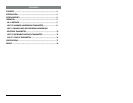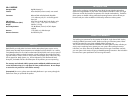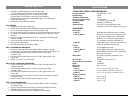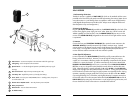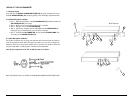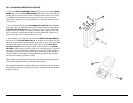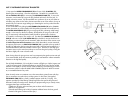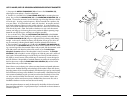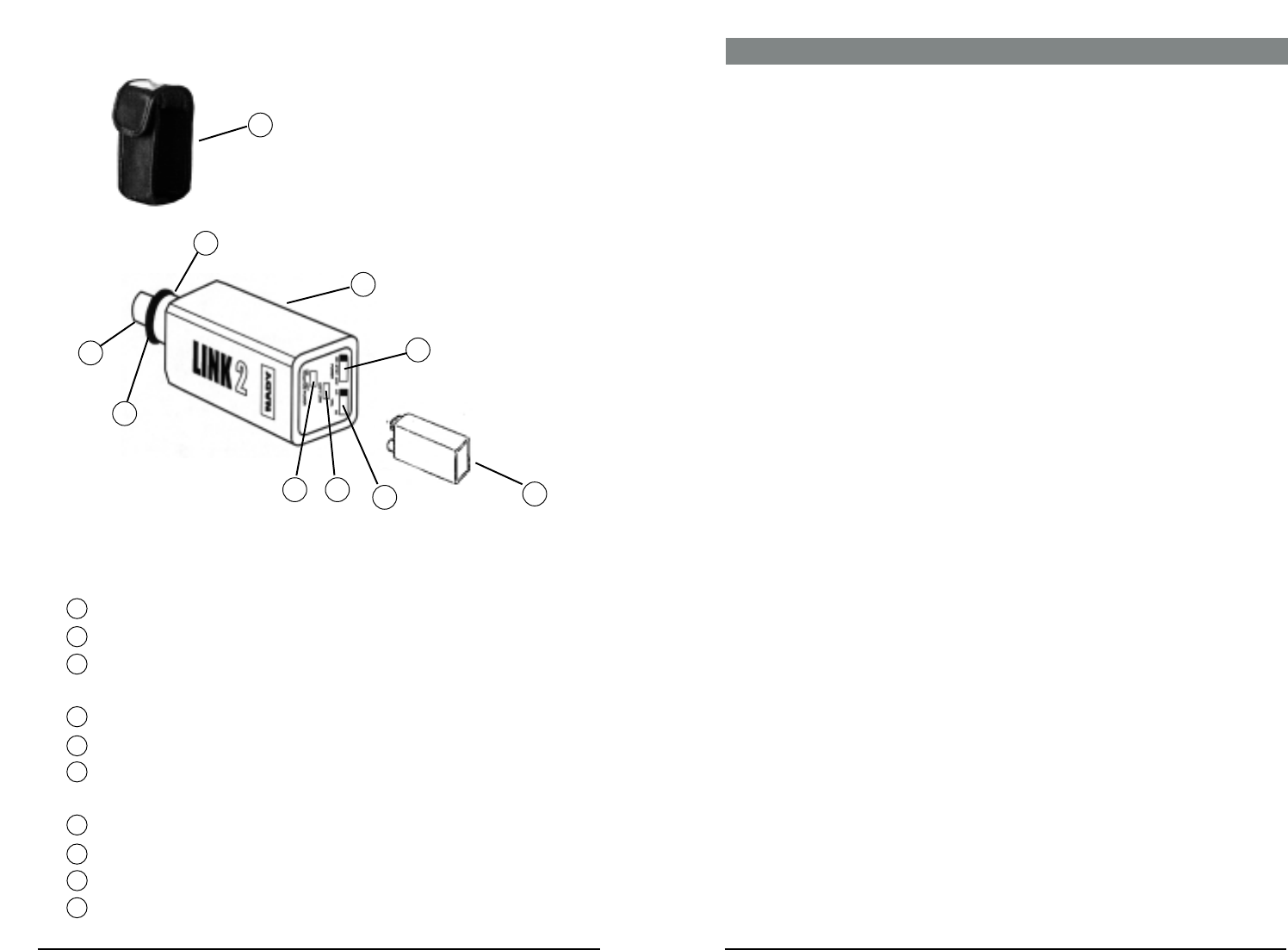
38
43
41
44
42
40
39
45
36
37
XLR Connector – Connects microphone to the transmitter module for signal input
Locking Ring – Locks microphone to the transmitter
Optional Pouch – For lavalier bodypack operation (with beltclip and strap ring for
securing)
Gain Control Switch – Adjusts the input sensitivity (LO or HI)
Low Battery LED – Single flash (power on), lit steady (low battery)
Power Switch - Turns the power ON/STANDBY/OFF. In standby position, the power is
on and the audio is off.
Phantom Power ON/OFF Switch – Turns the phantom power ON/OFF
Battery Compartment
Release Button – Press to release XLR connector
9V Alkaline Battery
36
37
38
39
40
41
42
43
44
45
16
XR-61 RECEIVER
1. Rackmounting the Receiver
The XR-61 receiver is supplied with RACK EARS (1) which can be attached with the screws
provided on the front of the side panels to enable rackmounting the receiver. (Note: Do not
mount the receiver in a rack directly above an amplifier or other source of high heat-this
could degrade the performance of the XR-61/62. Always ensure adequate airflow and
heat dissipation in any rack configuration.)
2. Powering the Receiver
Plug the 12V AC/DC ADAPTER (2) provided into the DC INPUT JACK (3) on the back of the
receiver. Then plug the power supply into an AC outlet. (Note: Any 12V DC source with
400mA capability can also be used.) Press the POWER SWITCH (4) once to turn on the
receiver. The POWER ON LED (5) integrated into the switch will now light and the receiver
is operational.
3. Antennas
Connect the front panel TELESCOPIC ANTENNAS (5) or optional remote antennas to the
ANTENNA JACKS (6). Extend the antennas fully to obtain maximum range. Optimal
antenna position is 45 degrees from the receiver (at 90 degrees from each other). For max-
imum range, it is always best to maintain a line of sight (no obstructions) between the
receiver antennas and the transmitter at all times whenever possible
4. Mute (Squelch) Adjustment
In normal operation, the MUTE CONTROL (7) should be set fully counterclockwise to the
factory preset minimum RF level. However, in areas of high RF activity, the mute (or
squelch, as it is sometimes called) may need to be adjusted to compensate for the adverse
conditions in a particular location. If, with the transmitter off, the receiver’s A and/or B
DIVERSITY LED INDICATORS (8) and/or one or more LEDs of the 5 LED RF LEVEL DISPLAY
(9) flicker or stay on, the squelch control should be turned clockwise until the LEDs extin-
guish. When the squelch is properly adjusted, the A and/or B LEDs or the RF LEVEL LED
displays will only light when the system transmitter is turned on. Turning the squelch control
too far clockwise will reduce the range, but yield a quieter mute (squelch) function. During
operation, especially at ranges greater than 75 feet, one or the other of the A or B LEDs
may extinguish briefly. This is normal-the unit’s DigiTRU Diversity™ reception ensures that
the received audio will not be interrupted. When both the A/B DIVERSITY LEDs and the 5
LED RF LEVEL display extinguish, the transmitter is out of range for that given location, and
the user should move closer to the receiver to re-establish the radio link.
OPERATION
5




